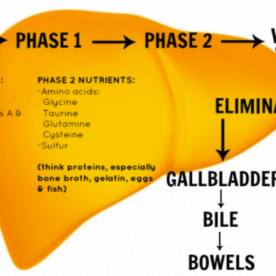As a nutritional and environmental health practitioner I’ve heard too many people say that their symptoms improve or disappear when they’re away from their home or workplace for there not to be something in the impact a building can have on our health. Given on average we spend 90% of our time indoors (The National Human Activity Pattern Survey), what happens inside buildings and how it impacts our health is critical. It’s not just about the physical environment, but also our behaviours in homes and workplaces including what we eat, how food is prepared and stored, products and furnishings we choose to bring into the building, and ease of access to green spaces and natural environments.
Modern built environments in particular are having an increasingly negative impact on our health including sedentary lifestyles, poor diets, stress, social isolation, environmental toxins, lack of connection to nature amongst other problems. As home, work and play become more blurred, and Building Biology gains more awareness, homes and workplaces will hopefully be seen as an investment in our health, not just a financial investment.I’ve developed a unique framework for working with people by combining the two areas of Building Biology and Nutrition to create holistically healthy homes and workplaces, I call it Building Wellness.
1.Build Well
- Eliminate or Reduce Environmental Toxins such as chemicals off gassing from building materials and furnishings, dust particles that can carry toxins, exposure to electromagnetic fields, chemicals from products brought into the building such as cleaning and personal care products, and mould. There are two aspects to this. Firstly eliminate these toxins as much as possible and secondly to filter, shield and use other methods to reduce your exposures. These indoor environmental problems can cause symptoms such as exacerbation of allergies, asthma and other respiratory issues, multiple chemical sensitivities, skin irritations, fatigue, insomnia, problems with concentration and memory, and can cause or contribute to chronic and serious diseases such as heart disease and cancer.
- Healthy Design, layout and energy includes the building aspect, ventilation, light, colours and the use of specific building materials, as well as the layout and how well the building energy flows. Comfort factors such as noise, temperature and ergonomics are also considered. For example light (and dark) has the ability to impact every aspect of our health because our bodies are incredibly sensitive to it. This includes our hormonal systems, mood and performance, sleep, metabolism and weight, immune function, mental health and cardiovascular health and much more. Natural light during the day and the ability to control artificial lighting is critical.
- Access to green space in and outside the building through healthy use of indoor plants, outdoor balcony space, a yard or easy access to parks. Research also shows that being able to see greenspaces from inside the building can also be beneficial.
2.Eat (& drink) Well
- Regular access to fresh and nutritious foods and drinks from local markets, local grocers or growing your own.
- Healthy food preparation and storage such utensils, preparation surfaces and food storage that are free of harmful plastics which can be damaging to our hormones and our immune system.
- Clean Drinking Water that is filtered appropriately for the specific source of water. Water source includes where it originates, how it travels to the tap and whether its mains, tank, bore or bottled. Understanding these things can impact what contaminants and chemicals could be in the water and allow us to determine what filter is needed. This can also be used in considering filters for bath and shower water.
3.Live and Be Well
- Rest through quality sleep. This has a big focus on the bedroom in terms of furnishings, bedding, floors, light, EMF’s etc. However, behaviours such as nutrition and movement that can impact sleep are also looked at if people are not getting adequate sleep.
- Renew through movement and being grounded in nature (humans have an innate need to be connected with nature). This can be in a yard, from biophilic design in the building, access to parks, walking to shops, walking in the bush or on the beach. Buildings should be designed to promote movement throughout the day such as staircases, accessibility to outdoor activities and spaces, standing desks and space to stretch and move throughout the day. In workplaces there should be provision for bike storage. There’s been much research to support being outside, as well as interacting with nature. This includes grounding (having your skin on the earth) on a daily basis, and the positive effects of “forest bathing” (health impact of our bodies being exposed to high levels of plant chemicals). Peoples exposure to Vitamin D stimulating sunshine (at the right time of day) is at an all time low, impacting many aspects of health. We know all these things act like antioxidants, therefore reducing inflammation and disease. It’s critical that buildings support us getting outside, individuals need to allow time ifor outdoor activities, and companies should encourage employees to spend time outside.
- Conscious living is about how we endeavour to be the best we can be, taking control and making intentional choices. Consciously deciding what we bring into our home, body and life, and therefore creating a low clutter environment helps us live with less worry and greater clarity. It’s a more environmentally conscious way of living. Being aware of how products are made (materials, ingredients, process, labour) is important for our health and the environment. Building design (ceiling heights, views of green spaces and use of light and colours) can contribute to lowering stress, as does fixing our digital overload. In workplaces a cultural mindset that encourages work leave, lunch times and other breaks and interaction with nature. Also important is location and connecting with supportive, connected communities, and a likeminded wellness culture. Be aware of “well-washing”, particularly with workplace wellness “programmes”. Move from talking about “Green” to “Healthy and Sustainable”, for example green rated buildings can be unhealthy for occupants. Lastly know that nothing is perfect or permanent – Wabi Sabi.







